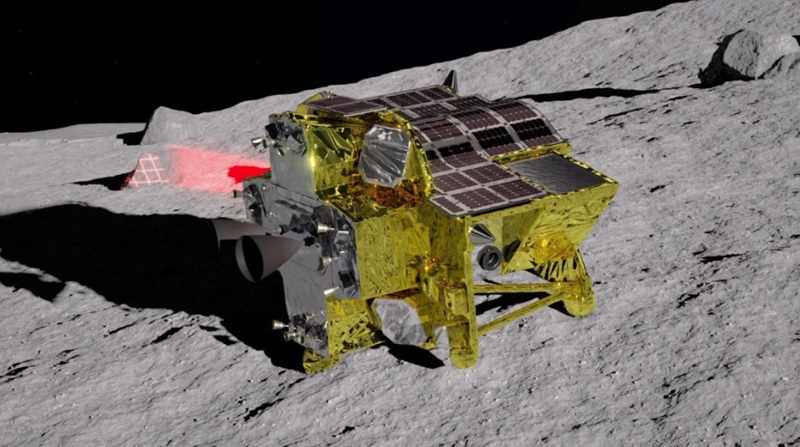Japan’s SLIM Mission Successfully Lands “Moon Sniper” on Lunar Surface-In a historic achievement, Japan’s Aerospace Exploration Agency (JAXA) has successfully landed its robotic explorer, the “Moon Sniper,” on the lunar surface. The Smart Lander for Investigating Moon (SLIM) mission, which commenced its descent at 10 a.m. ET, marked a significant milestone in lunar exploration, positioning Japan as the third country this century and the fifth ever to accomplish a safe lunar landing.
Japan’s SLIM Mission Successfully Lands “Moon Sniper” on Lunar Surface

Precision Technology and “Pinpoint” Landing
The SLIM robotic explorer, fondly dubbed the Moon Sniper, launched in September, showcasing new precision technology designed for a “pinpoint” landing. Unlike previous lunar missions covering vast areas, the Moon Sniper targeted a landing site just 100 meters (328 feet) across. The key to its precision is the “smart eyes” — an image-matching-based navigation technology. These smart eyes rapidly photographed the lunar surface during the descent, autonomously adjusting for a controlled and precise touchdown.
Scientific Goals in the Sea of Nectar
The Moon Sniper’s chosen landing site, near the Shioli crater within the lunar plain known as the Sea of Nectar, is of great scientific interest. This region, shaped by ancient volcanic activity, lies just south of the iconic Sea of Tranquility, where the Apollo 11 mission landed in 1969. If the lander’s successful touchdown is confirmed, it will conduct a brief study of rocks in the area, potentially offering insights into the moon’s origin.
Lunar Exploration in a New Decade
JAXA’s successful mission comes amid a renewed interest in lunar exploration globally. The Moon Sniper joins recent missions, with India achieving a controlled landing in August, becoming the fourth country to do so. However, other attempts, including Japan’s Ispace’s Hakuto-R lunar lander and Russia’s Luna-25, faced challenges and setbacks.
Challenges and Technological Triumph
Landing on rocky terrain, especially near craters, poses a significant challenge that most missions usually avoid. The Moon Sniper’s successful landing in these hazardous areas underscores JAXA’s confidence in its technology to navigate and touch down safely on rocky surfaces.
Water Exploration and Future Prospects
The recent surge in lunar exploration is motivated by the desire to access water trapped as ice in permanently shadowed regions at the lunar south pole. This valuable resource could serve as drinking water or fuel for future space exploration. The SLIM lander, with its lightweight design and successful landing, could potentially pave the way for similar missions on planets like Mars.
Japan’s Entry into Lunar Exploration Elite
Japan’s entry into the select group of countries with successful lunar landings marks a significant achievement. The precision technology demonstrated by the Moon Sniper, coupled with the scientific goals of studying lunar rocks, positions Japan at the forefront of lunar exploration in the new decade.
Conclusion
As the world celebrates Japan’s success in landing the Moon Sniper on the lunar surface, the mission opens new possibilities for scientific exploration and future space endeavors. The SLIM mission’s triumph is a testament to technological advancements and international collaboration in pushing the boundaries of human space exploration.